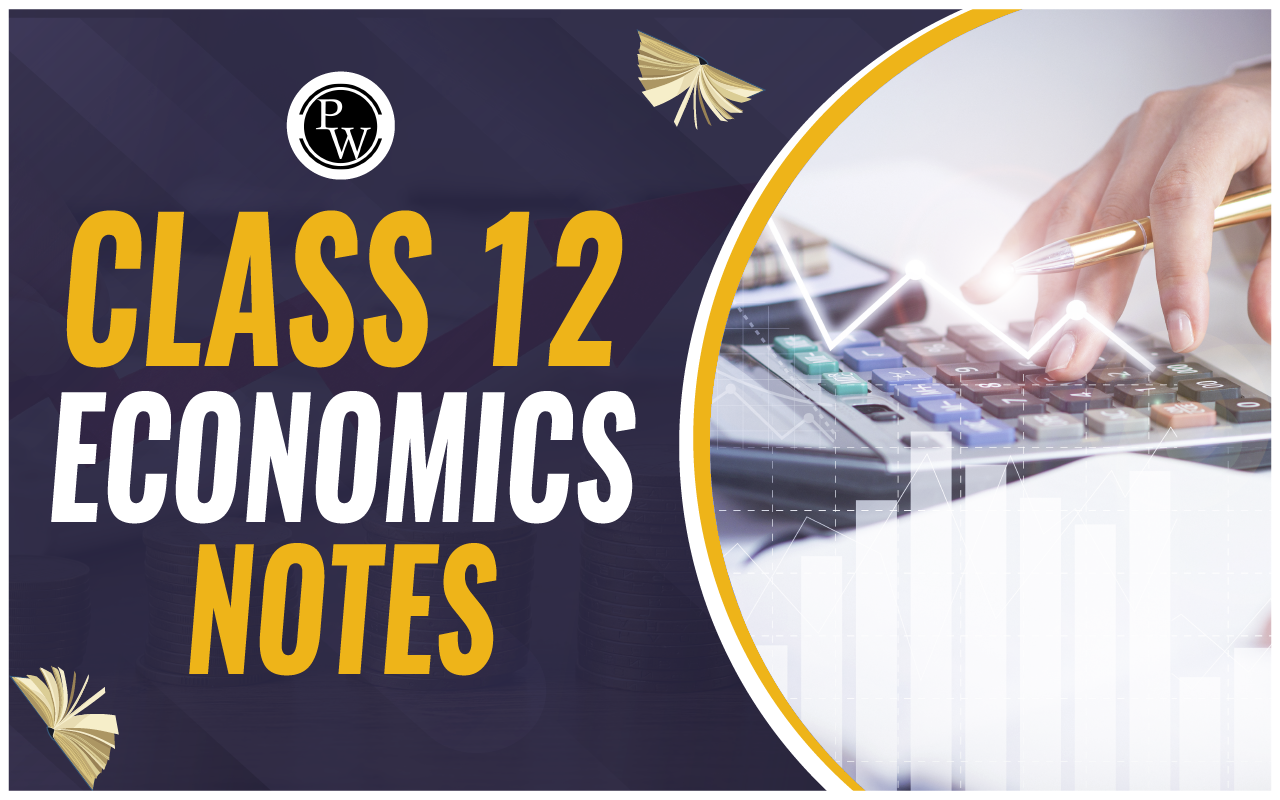
The Indian economy 1950-1990, went through four decades, during which the Five-Year Plans were implemented. During this period, several important developments occurred in agriculture, commerce, trade, and other economic fields. India moved from a primarily agrarian economy to a mixed industrial one without complications. The Class 12 Chapter regarding the Indian economy from 1950-1990 discusses various economies.
India woke up to a new age of independence on August 15, 1947. After roughly two hundred years of British domination, we finally seized command of our own lives. Now it was the only task of our group to construct a nation. As India became independent, its leaders had to make key decisions, such as working out the ideal economic structure for the nation, one that would enhance the lives of everyone, not just a few.Download the Class 12 NCERT Indian Economy 1950-1990 PDF
Indian Economy 1950-1990 Economic Systems
Various economic systems or economies exist, each requiring societies or countries to address three fundamental questions: what to produce, how to produce, and for whom to produce. The selection of a specific economic system resolves these questions, and the following are key types:Capitalist or Market Economy:
In this system, the private sector owns, controls, and operates the means of production. Profit generation is the primary motive, and the central economic problems are resolved through market forces like demand and supply.Socialist or Centrally Planned Economy:
Here, the government assumes ownership, control, and operation of the means of production. Economic decisions about what, how, and for whom to produce are made by the government, prioritizing social welfare. Individual consumer desires have less influence, and the government dictates production based on societal needs.Mixed Economy:
Combining elements of both a free-market economy and a socialist economy, a mixed economy features the coexistence of the private and public sectors. The government and the market collaboratively address the three economic questions. In a mixed economy, the market efficiently provides goods and services, while the government intervenes to ensure essential goods and services are available, addressing areas where the market falls short.Planning Commission- Indian Economy 1950-1990
The view set out in the "Industrial Policy Resolution" of 1948 and the Indian Constitution's Directive Principles was clear. Making the Planning Commission, which was led by the Prime Minister, in 1950 was the start of the age of five-year plans.What is a Plan?
A plan describes the intended utilization of a nation's resources, covering both broad goals and specific targets to be completed within a set timeframe. In India, these plans spread over five years, a format taken from the former Soviet Union, known as a trailblazer in national planning. Also ReadGoals of The Five Year Plans- Indian Economy 1950-1990
The Indian Economy 1950-1990 experienced an increase because of a major role played by the five year plans. The Five-Year Plans aim for four fundamental objectives:Growth:
- Growth signifies the augmentation of a nation's capacity to produce goods and services domestically.
- It involves an increase in productive capital, expansion of supporting services like transport and banking, or enhanced efficiency in both capital and services.
- A key measure of economic growth is the consistent rise in Gross Domestic Product (GDP), representing the market value of all final goods and services produced within the country in a given year.
- The GDP is derived from different sectors, including agriculture, industry, and services, shaping the structural composition of the economy.
Modernization:
- Modernization entails adopting new production techniques to enhance the output of goods and services.
- This could involve farmers using improved seed varieties or factories employing advanced machinery.
- Modernization isn't confined to technology alone but extends to societal changes, such as acknowledging equal rights for women. Modern societies often leverage the talents of women in various fields, contributing to prosperity.
Self-reliance:
- Self-reliance focuses on fostering economic growth and modernization using a nation's own resources, minimizing dependence on imports.
- Early Five-Year Plans emphasized self-reliance to reduce reliance on foreign goods, especially given India's recent independence.
- The policy aimed to safeguard sovereignty by avoiding vulnerability to foreign interference in policies.
Equity:
- In addition to growth, modernization, and self-reliance, equity is crucial.
- Equity ensures that economic prosperity benefits not only the affluent but also reaches the impoverished sections of society.
- Basic needs like food, decent housing, education, and healthcare should be accessible to every Indian, and efforts should be made to reduce wealth inequality.
Agriculture- Indian Economy 1950-1990
Agriculture during the colonial era witnessed stagnation and inequality. To address these issues, the government undertook initiatives to boost Indian Economy 1950-1990, in two main areas:1. Land Reforms (Institutional Reforms):
- Land reforms aimed to bring about equity in agriculture by altering land ownership patterns.
- At independence, the land tenure system featured intermediaries like zamindars, who collected rent without contributing to farm improvements.
- The low productivity in agriculture led to food imports from the United States, despite the sector employing the majority of the workforce (70-75%).
- Various land reform measures were implemented, including the abolition of intermediaries or the zamindari system.
- The "land to the tiller" policy sought to eliminate intermediaries, making tillers the landowners.
- While successful in freeing tenants from zamindar exploitation, some challenges persisted.
- Former zamindars retained land through legal loopholes, and the poorest agricultural laborers did not benefit.
- Another measure was the Land Ceiling Act, setting a maximum land size per individual to reduce concentration and promote equity.
- Challenges included legal opposition and loopholes exploited by large landholders to retain their holdings.
Looking for the Best Commerce Coaching?
Enroll Now in PW Commerce Batches!
2. Green Revolution (Technological Reforms):
The Green Revolution, also known as Technological Reforms, signifies a substantial increase in food grain production attributed to the widespread use of high-yielding variety (HYV) seeds, particularly for wheat and rice. Farmers who stood to benefit from HYV seeds needed reliable irrigation systems and adequate financial resources to procure fertilizers and pesticides.Reasons for Embracing the Green Revolution Include:
- When the country gained independence, some 75 percent of the population relied on agriculture as its source of livelihood.
- Poor production was due to out-of-date technology and a lack of basic infrastructure among most of the farmers in the agriculture sector.
- In India, agriculture had always relied on the rains, and if there was any shortfall in monsoon rainfall, there were always serious problems for farmers.
| Read Related Topics | |||
| Index Numbers | Likert Management System | Types of Insurance | Joint Venture (JV) |
| E-commerce | Gross Profit Ratio | Guarantee of Profit to a Partner | Food Security |
Indian Economy 1950-1990 FAQs
What is the status of the Indian economy?
According to the World GDP Ranking 2023, India has the world's fifth biggest economy.
Which nation has the highest GDP?
With a GDP of $26,854 billion, the United States has the world's biggest economy.
Who are the top five in terms of GDP?
In 2023, the world's major economies are the United States of America, China, Japan, Germany, and India.
In which area does India lead the world?
India ranks second globally in the production of rice, wheat, sugarcane, groundnuts, vegetables, fruit, and cotton, and is the world's largest producer of milk, pulses, and jute.
Which nation is the fastest growing?
Guyana had the world's greatest real GDP growth rate in 2022, with national production increasing by 62.4%.
Talk to a counsellorHave doubts? Our support team will be happy to assist you!

Check out these Related Articles
Free Learning Resources
PW Books
Notes (Class 10-12)
PW Study Materials
Notes (Class 6-9)
Ncert Solutions
Govt Exams
Class 6th to 12th Online Courses
Govt Job Exams Courses
UPSC Coaching
Defence Exam Coaching
Gate Exam Coaching
Other Exams
Know about Physics Wallah
Physics Wallah is an Indian edtech platform that provides accessible & comprehensive learning experiences to students from Class 6th to postgraduate level. We also provide extensive NCERT solutions, sample paper, NEET, JEE Mains, BITSAT previous year papers & more such resources to students. Physics Wallah also caters to over 3.5 million registered students and over 78 lakh+ Youtube subscribers with 4.8 rating on its app.
We Stand Out because
We provide students with intensive courses with India’s qualified & experienced faculties & mentors. PW strives to make the learning experience comprehensive and accessible for students of all sections of society. We believe in empowering every single student who couldn't dream of a good career in engineering and medical field earlier.
Our Key Focus Areas
Physics Wallah's main focus is to make the learning experience as economical as possible for all students. With our affordable courses like Lakshya, Udaan and Arjuna and many others, we have been able to provide a platform for lakhs of aspirants. From providing Chemistry, Maths, Physics formula to giving e-books of eminent authors like RD Sharma, RS Aggarwal and Lakhmir Singh, PW focuses on every single student's need for preparation.
What Makes Us Different
Physics Wallah strives to develop a comprehensive pedagogical structure for students, where they get a state-of-the-art learning experience with study material and resources. Apart from catering students preparing for JEE Mains and NEET, PW also provides study material for each state board like Uttar Pradesh, Bihar, and others
Copyright © 2025 Physicswallah Limited All rights reserved.
Get App









